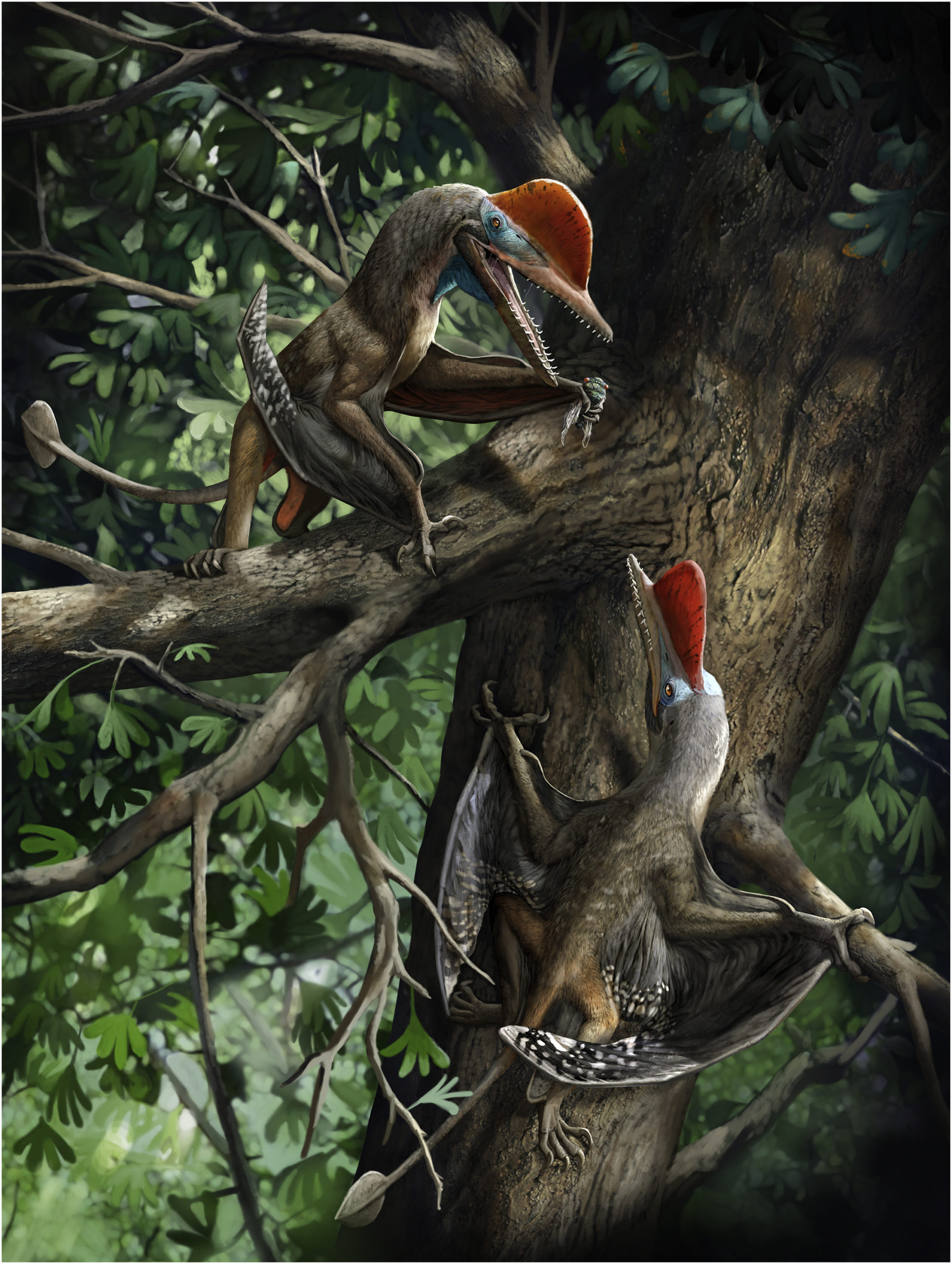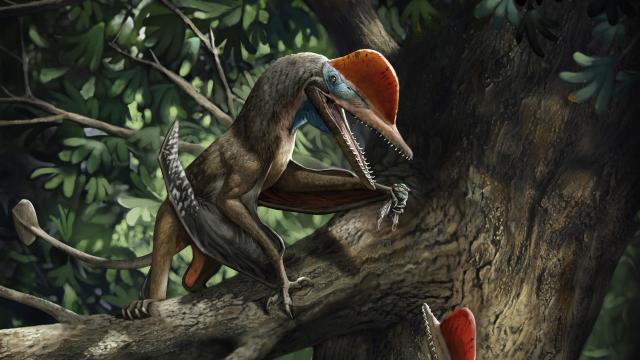A pterosaur with a 0.91 m wingspan clambered around trees using claws and an opposable thumb some 160 million years ago in what is now Liaoning, China, according to a study published today in Current Biology. It’s the first pterosaur and oldest known animal to appear to have this trait.
Affectionately dubbed ‘Monkeydactyl’ for the unique forelimb morphology, the pterosaur — its scientific name is Kunpengopterus antipollicatus — was one of three known genera of darwinopteran pterosaurs in the area. Darwinopteran pterosaurs were named after Darwin for their unique anatomies, which are transitional: They hint at the evolutionary shift from pterosaur precursors like the lagerpetids to the larger, more familiar flying pterosaurs.
Because K. antipollicatus is the only darwinopteran pterosaur in the area the research team thinks had an opposable digit, the researchers suggest that these pterosaurs evolved to take on very specific roles in their ecosystem.
“Our results show that K. antipollicatus has occupied a different niche from Darwinopterus and Wukongopterus, which has likely minimized competition among these pterosaurs,” said lead author Xuanyu Zhou, a paleontologist at the China University of Geosciences, in a University of Birmingham press release.
The opposite digit in the pterosaurian species is technically a “pollex,” which is the innermost digit of a forelimb. (Not all animals have thumbs, so pollex is a catch-all term.) Other modern species to have opposable pollices include tree frogs, which are amphibians, and chameleons, the only extant reptiles to have the feature. The opposite digit is crucial for grip among arboreal species, as it allows them to better cling to branches and climb trees.

To determine whether the Jurassic pterosaur’s thumbs were opposable (only one claw was preserved, so the team is going off that forelimb), the team X-ray imaged the fossil, getting a better sense of how the digit corresponded to the other claws at the animal’s disposal.
“The fingers of ‘Monkeydactyl’ are tiny and partly embedded in the slab,” said co-author Fion Waisum Ma, a paleontologist at the University of Birmingham, in the same release. By X-ray scanning, Ma said, the team “could see through the rocks, create digital models and tell how the opposed thumb articulates with the other finger bones.”
To test whether darwinopterans writ large were truly arboreal (the study authors note they were thought to be for some time, though evidence was tenuous), the researchers compared 25 pterosaur species, including K. antipollicatus, with over 150 other species known for tree climbing. They determined that the specimen was indeed a tree climber, though the other pterosaurs from the area lacked the capacity.
Not everyone’s convinced, however. “An opposable thumb is not an infallible indication of arboreality,” said Kevin Padian, a paleontologist at UC Berkeley who is unaffiliated with the recent paper, in an email. Padian points out that extant animals like raccoons and otters have opposable thumbs but aren’t tree-dwelling, and that the researchers’ findings were based on the single preserved claw in the fossil, the position of which may be an artefact of its preservation.
“The bottom line, for me, is that the specimen’s articular surfaces are too poorly preserved to draw an inference of opposability,” he said. “I think we would want more and better preserved examples of this species before jumping to conclusions.”
The pterosaur story, some 220 million years old and counting, still leaves plenty to the imagination, including the question of whether or not the airborne reptiles climbed trees. But, perhaps with better evidence — more fossils down the line — we may get some solid answers.
